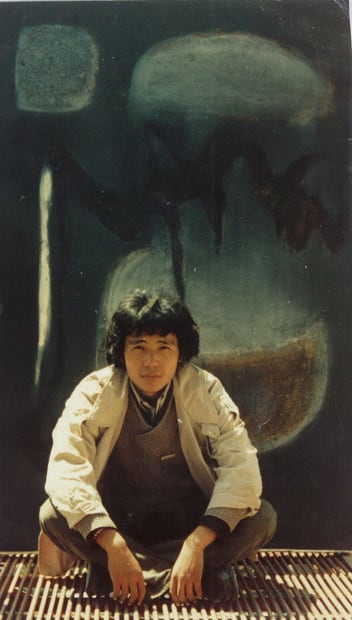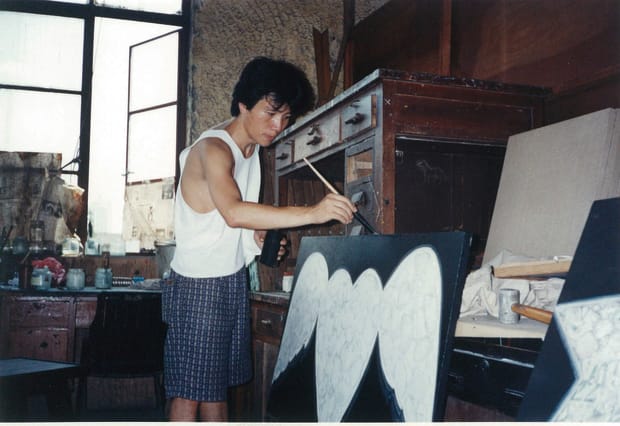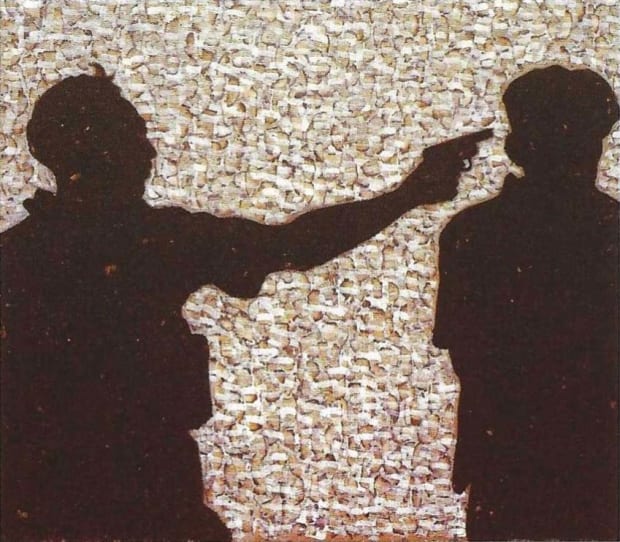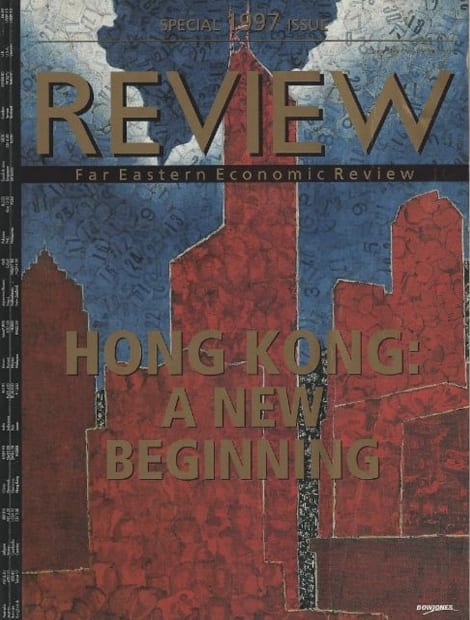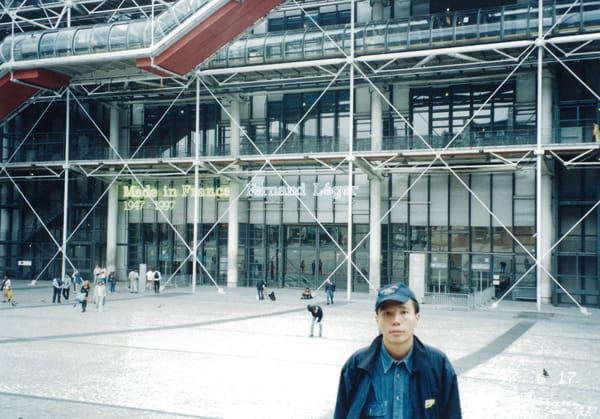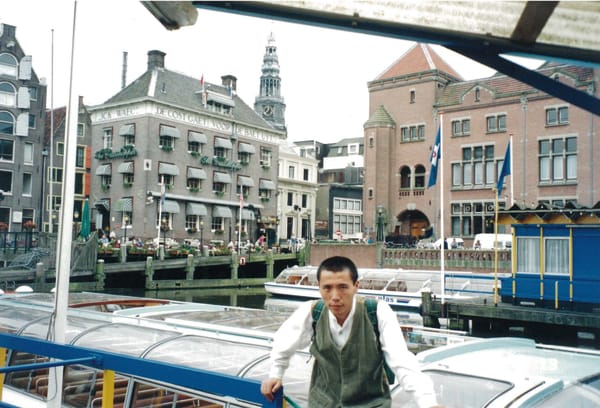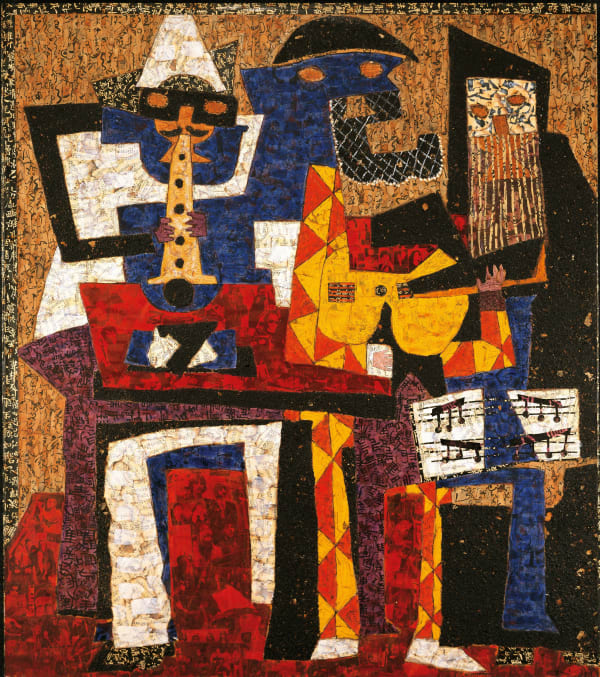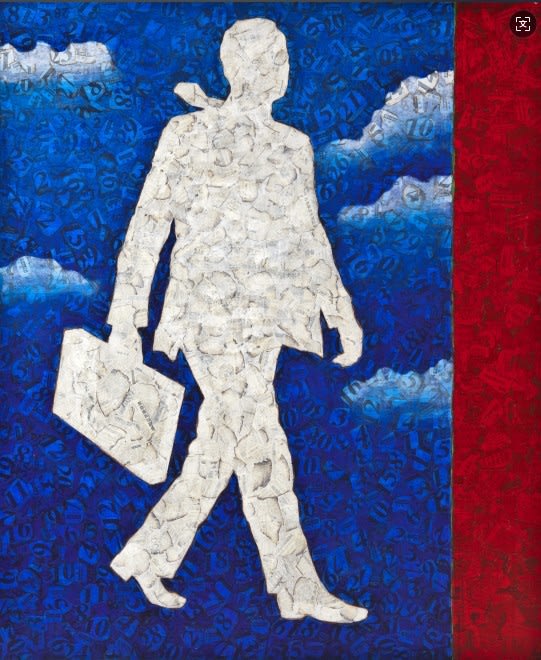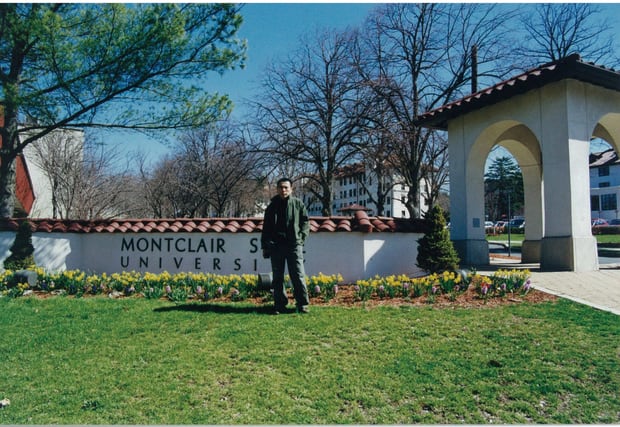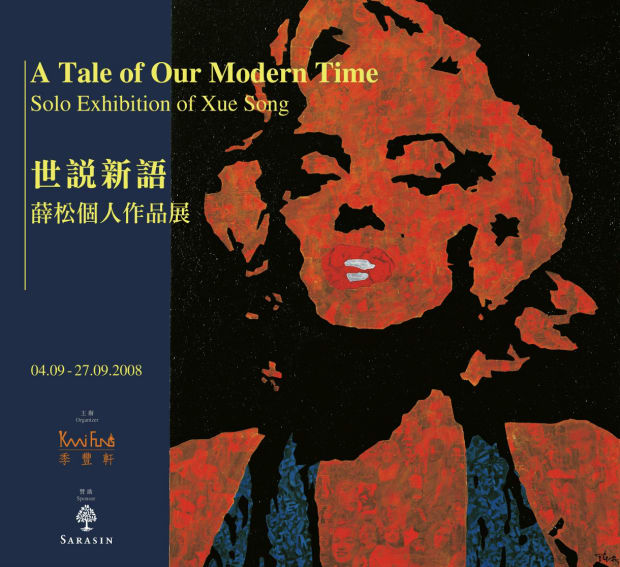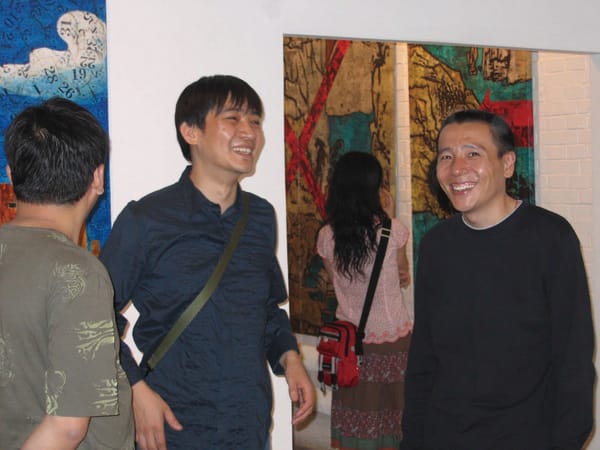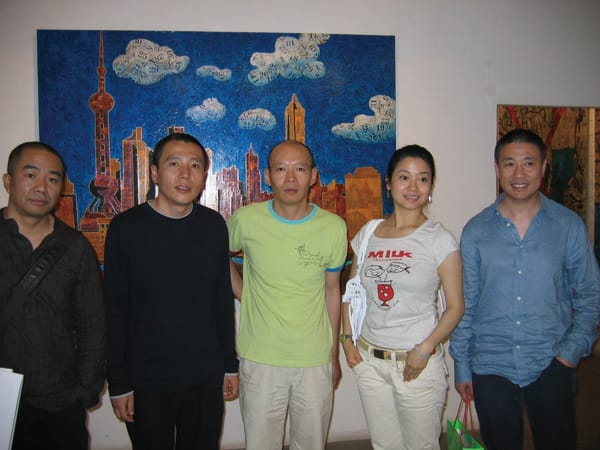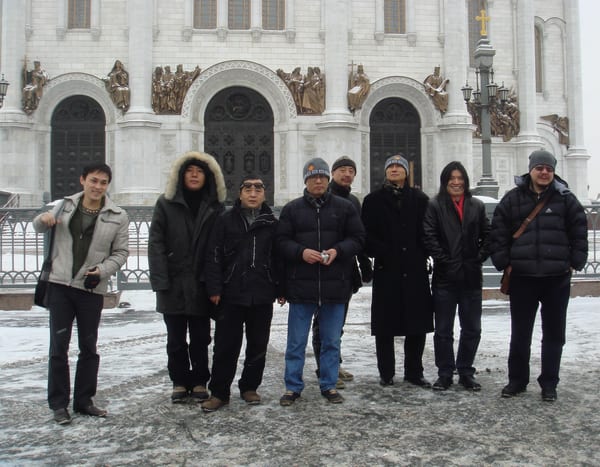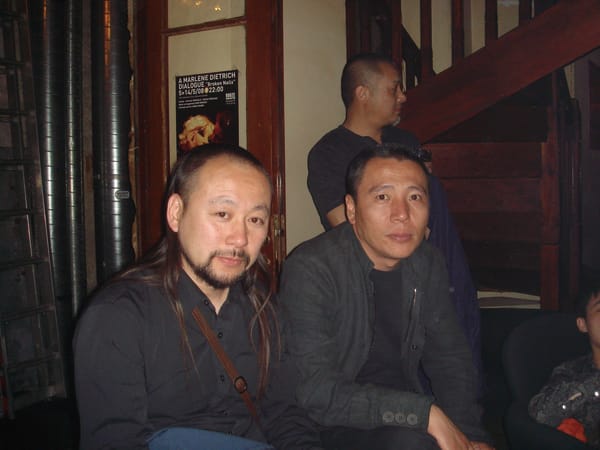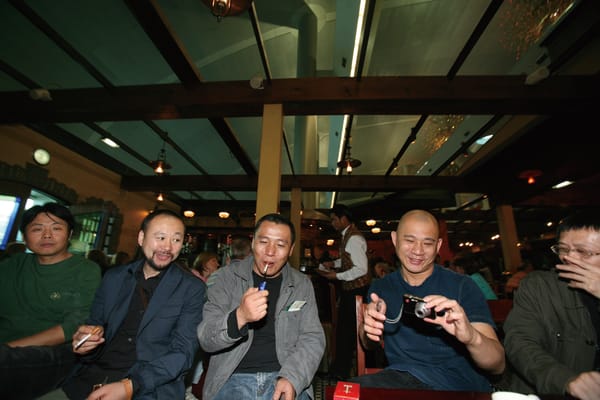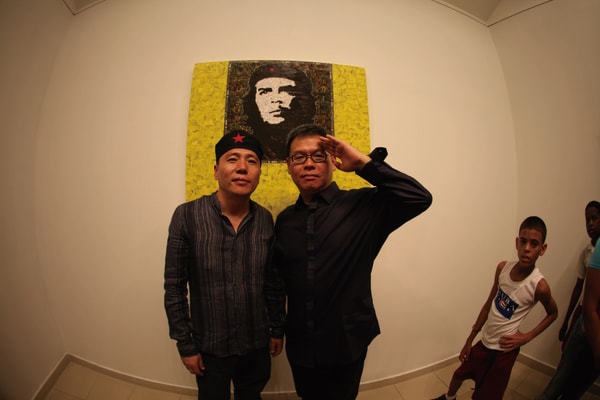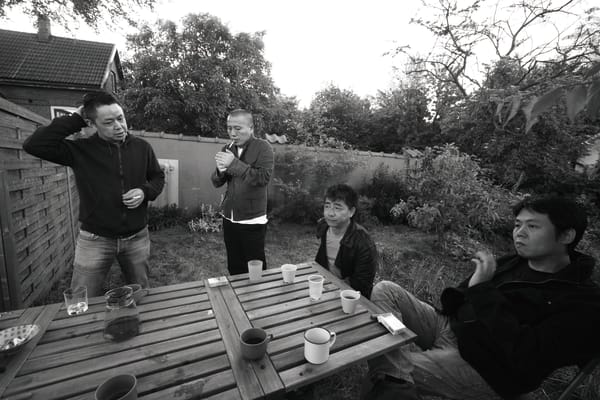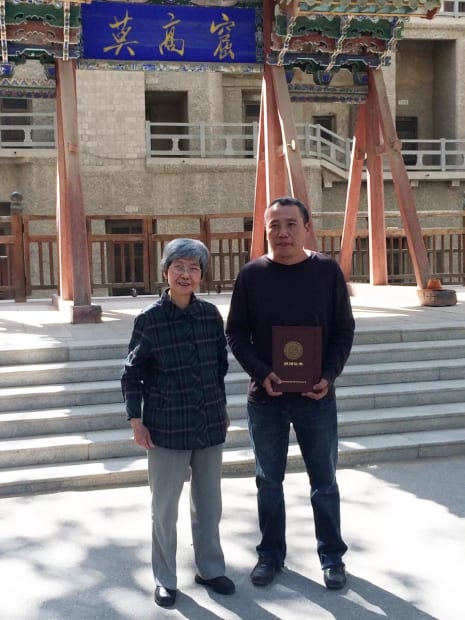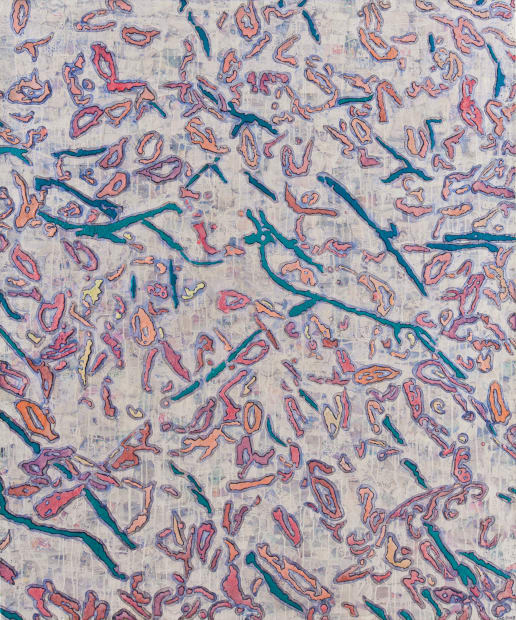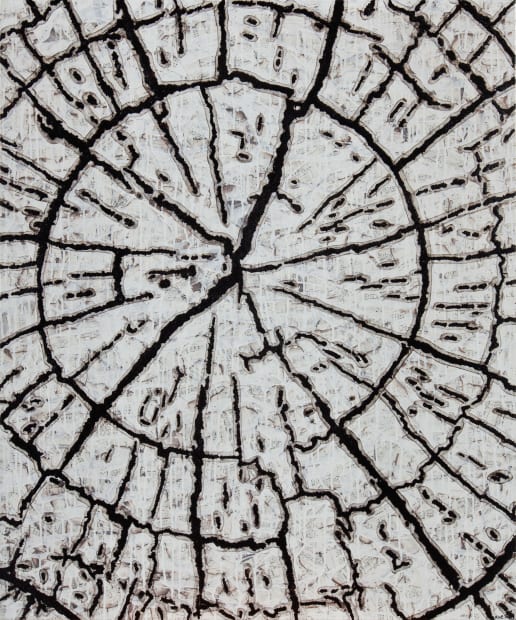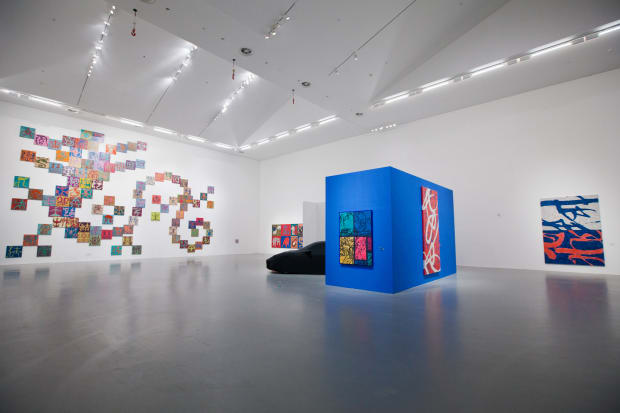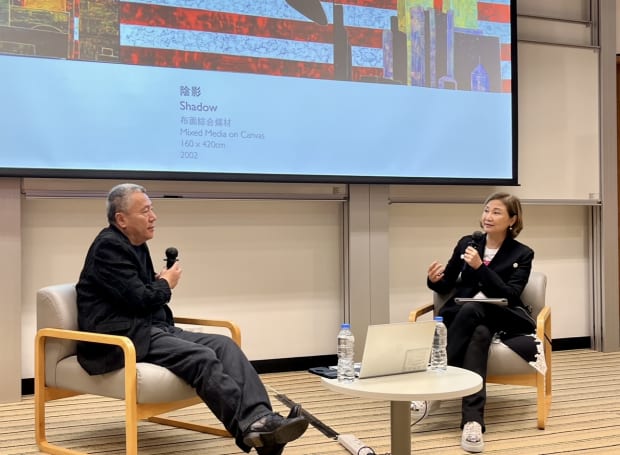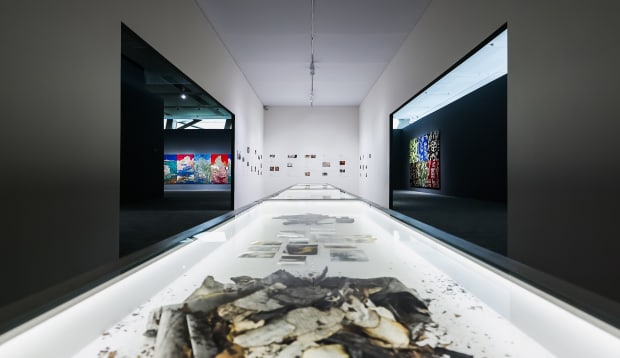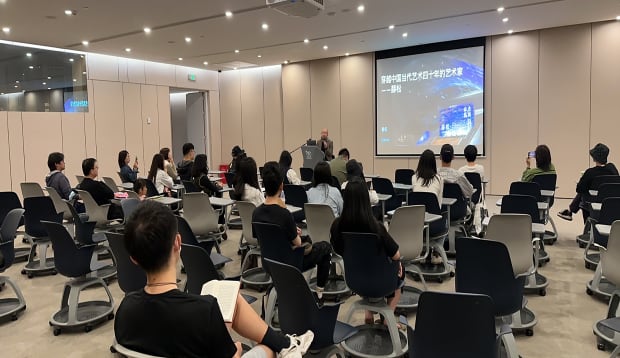-
Xue Song (1965-)
Xue Song was born in Anhui, China in 1965, and graduated from the Stage Design Department of the Shanghai Theater Academy in 1988. Over nearly four decades, he has bridged East and West, historical memory and contemporary reality, traditional culture and contemporary viewpoints. He is recognized as one of the key figures in Chinese Pop Art. In 1991, a studio fire inspired Xue Song’s signature “burning” and “collage” techniques. Using flames and ashes as medium, he reconstructs printed fragments into new visual narratives, exploring themes such as Global Pop, Local Pop, Metropolis, New Landscape, Dialogue between the East and West, Text and Calligraphy. Since 2019, Xue Song has drawn from Daoist philosophy to create “The Dao from Nature” series. These works abandon cultural and historical symbols, embracing nature’s imagery to pursue pure artistic freedom.
-
 Xue Song's 100-day birthday photo
Xue Song's 100-day birthday photo -

Xue Song as a student, 1985
-

Xue Song at the scene after the fire
-
 Xue Song in the studio of Shanghai Opera House, 1992
Xue Song in the studio of Shanghai Opera House, 1992
-

Xue Song with British artists Gilbert & George at the Shanghai Art Museum
-
-

Far Eastern Economic Review, 1997 special issue cover
-
Xue Song traveled Around Europe in 1997
-
-
-
-

Stronger Than an Army, A Western Ⅰ, 1998
Mixed media on canvas
160 x 140cm
The first pair of works in “Dialogue between the East and West” series
-

Stronger Than an Army, A Western Ⅱ, 1998
Mixed media on canvas
160 x 140cm
The first pair of works in “Dialogue Between the East and West” series
-

Dream VS Reality, 1999
Mixed media on canvas
180 x 150cm
The first work in “Metropolis” series
-
-

Xue Song participated in group exhibition at the Art Museum of Montclair State University, New Jersey, USA, 2000
-
-

-
Xue Song with His Peers on site, 2006-2011
-

Xue Song with Leng Lin during his solo exhibition at Dimensions Art Centre, 2006
-

Xue Song with Zeng Hao, Yue Minjun, Yu Er and Qu Fengguo during his solo exhibition at Dimensions Art Centre, 2006
-

Xue Song with Zhong Biao, Wei Guangqing, Zhang Xiaogang, Tang Zhigang, Mao Xuhui, Feng Zhengjie and Wang Yigang in Russia in 2007
-

Xue Song and Fang Li Jun at the opening banquet of the exhibition in Greece National Museum of Art in 2008
-
-
 Prof. Fan Jinshi, Honorary Director of the Dunhuang Academy,presenting the certificate
Prof. Fan Jinshi, Honorary Director of the Dunhuang Academy,presenting the certificate -
-
 Exhibition “China DNA – Xue Song 2020” , Powerlong Museum, Shanghai
Exhibition “China DNA – Xue Song 2020” , Powerlong Museum, Shanghai -

“Piercing through Changing Times – Dialogue with Artist Xue Song”, 27 March 2023, The Jockey Club Institute for Advanced Study, The Hong Kong University of Science and Technology
-

